DEFENSE SUPPLY CENTER, COLUMBUS, Ohio -- More than 200 Corps of Engineers emergency response volunteers came here March 16 through 18 to practice some of the critical early response missions, such as providing emergency power and procuring life-essential commodities like water and ice, to prepare and be ready for the possibility of upcoming disasters.
These missions are generally the first emergency response missions the Corps carries out following a disaster, as they directly provide critical needs for impacted communities.
"Your response actions set the conditions for the rest of us who come in for recovery missions," Col. Frank Ford, Chief of Operations at Corps of Engineers Headquarters, told a group of exercise participants while reviewing lessons learned from the exercise. "You are the first ones in and we live and die by how well you respond."
Ford also noted that because the jobs of the first responders are so vital, this is the only emergency operations exercise that is conducted annually.
Teams from Region V of the Federal Emergency Management Agency, the Ohio Emergency Management Agency and the Department of Energy participated in the exercise with Corps personnel from throughout the country.
Fred Kaehler, operational planner for the Disaster Operations Division of FEMA Region V, encouraged exercise participants to "make the most of the exercise, because as the waters rise up north, you may be doing this for real very soon."
Planning and response teams from several districts operated under a scenario in which a vicious three-day-long ice storm struck Ohio, leaving large areas without power or access to critical commodities like water and ice safe for use.
Throughout the exercise, additional scenarios were thrown in to see how the teams would react to them while trying to work through the normal issues associated with such an event. All of this should ultimately lead to more efficient responses to real future disasters, said Pittsburgh District's David A. Bishop, the program manager for the exercise.
"The purpose of an exercise is to examine all aspects of it and see what we did well and didn't do well," Bishop said. "And take those things we didn't do well and find ways to make improvements and do better so when a disaster strikes we'll be prepared to fully engage."
Commodities PRT's, including the National Ice and National Water teams, worked on making sure that ice and water were procured and delivered in the scenario. This included team members becoming familiar with the specific mission roles and responsibilities, the latest technology they'll be using to track ice and water shipments, the process of interacting with federal and local partners and much more.
Craig Lykins, a member of the National Ice Team from Albuquerque District with deployment experience, said the exercise provided an excellent opportunity for volunteers with less real-world experience.
"We have a lot of new volunteers to the team that need this training, need this exercise and are learning tremendously what will go on during an actual event," Lykyns said. "This will benefit our team extremely, so we'll have a number of trained employees who can step in and do the job."
Once commodities are delivered to an impacted area, local officials manage what are called Points of Distribution, or PODS, where the ice and water, and sometimes Meals Ready to Eat, are actually distributed to people impacted by the disaster. A small POD was set up at the Ohio EMA headquarters, which gave officials there the opportunity to gain experience in setting a POD up and the distribution process.
State officials also had the opportunity to work with power team members and learn ways to improve the process of getting emergency power to critical facilities in the event of a large-scale disaster by practicing how to formally request federal assets.
"It's about training, it's about partnership, it's about knowing roles and responsibilities so when we have to work together, which we know we will, we'll be prepared," Ohio EMA Director Nancy Dragani said.
Members of Emergency Power PRT's from around the country worked with Soldiers from the Corps' 249th Engineer Battalion to assess generators FEMA keeps in storage for disasters and practiced installing and de-installing generators at a mechanic shop facility on the installation. Contractors who would be working with the PRT's and the 249th in a real disaster situation also participated in the exercise.
Timothy Keyser, mission manager for the Philadelphia District's Power Team, noted how important it is for the power teams, Soldiers and contractors to get the chance to work and train together to build team cohesion, make sure everybody knows their roles and responsibilities and to work through speed bumps that could show up during real life missions.
During a real large-scale disaster response, the Emergency Power PRTs and the 249th would manage the installation of emergency generators at critical public facilities, like hospitals, police and fire stations, water treatment plants and shelters.
The exercise also provided Platoon A from the 249th Engineer Battalion based at Schofield Barracks, Hawaii, the opportunity to become certified in their duties. The platoon is scheduled to be the 249th unit that will be deploy as needed from April through September.
Other emergency response PRTs found the exercise to be a great practice opportunity, including responders from the USACE Logistics Activity who were participating for the first time in this year's exercise.
"Our purpose is to help the Corps overall with logistics support and facilities, transportation and supply and particularly in this kind of response event administrative purposes," said Greg Muilenburg, chief of logistics for the Great Lakes and Ohio River Division.
Several Deployable Tactical Operating System, or DTOS, vehicles from around the country participated as well. These vehicles range from RV-sized rapid response vehicles that can be driven to disaster sites right away to larger units that have to be transported by tractor-trailers.
The DTOS units act as mobile work stations, where emergency responders can start their missions and have power, communications and other capabilities need to carry out their missions."
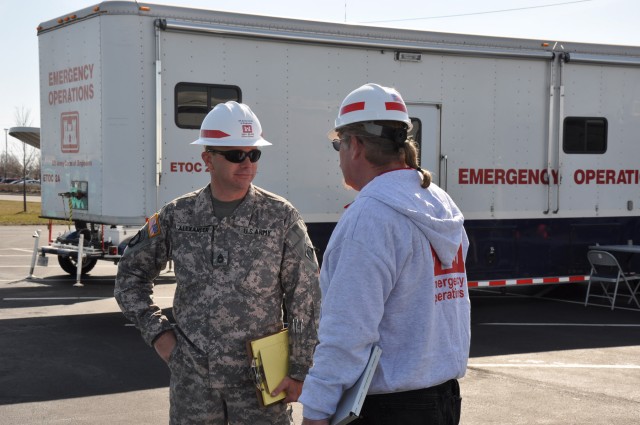
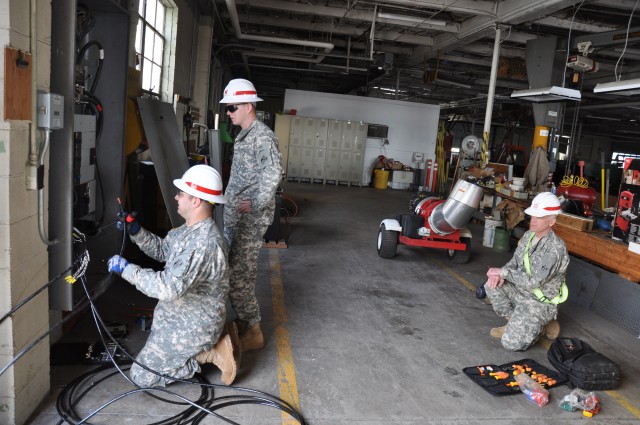
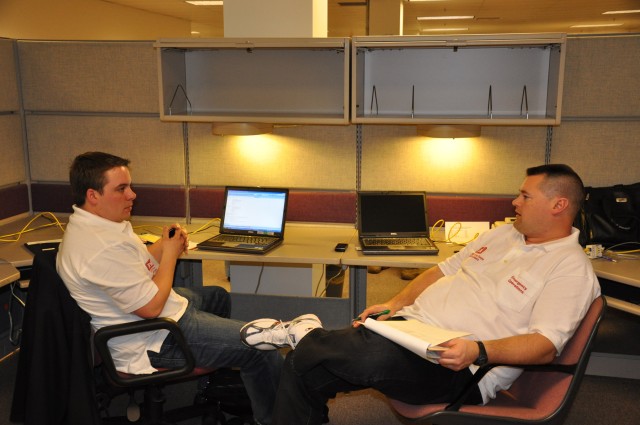
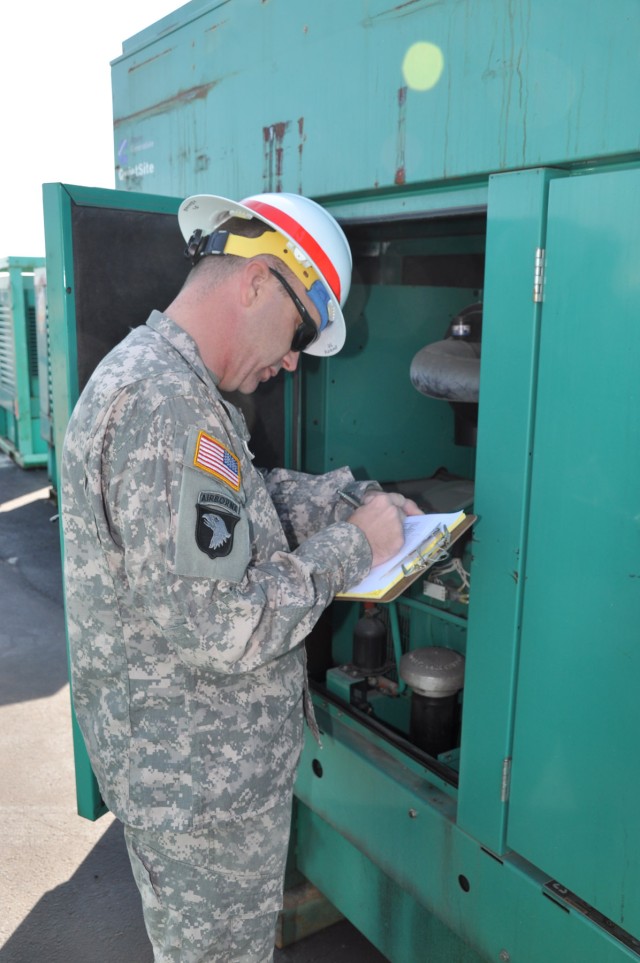
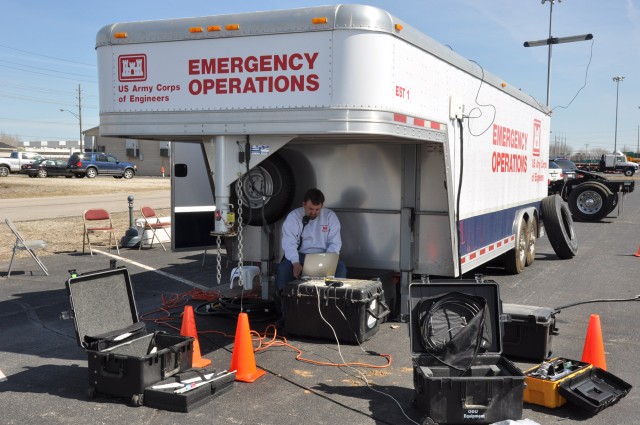


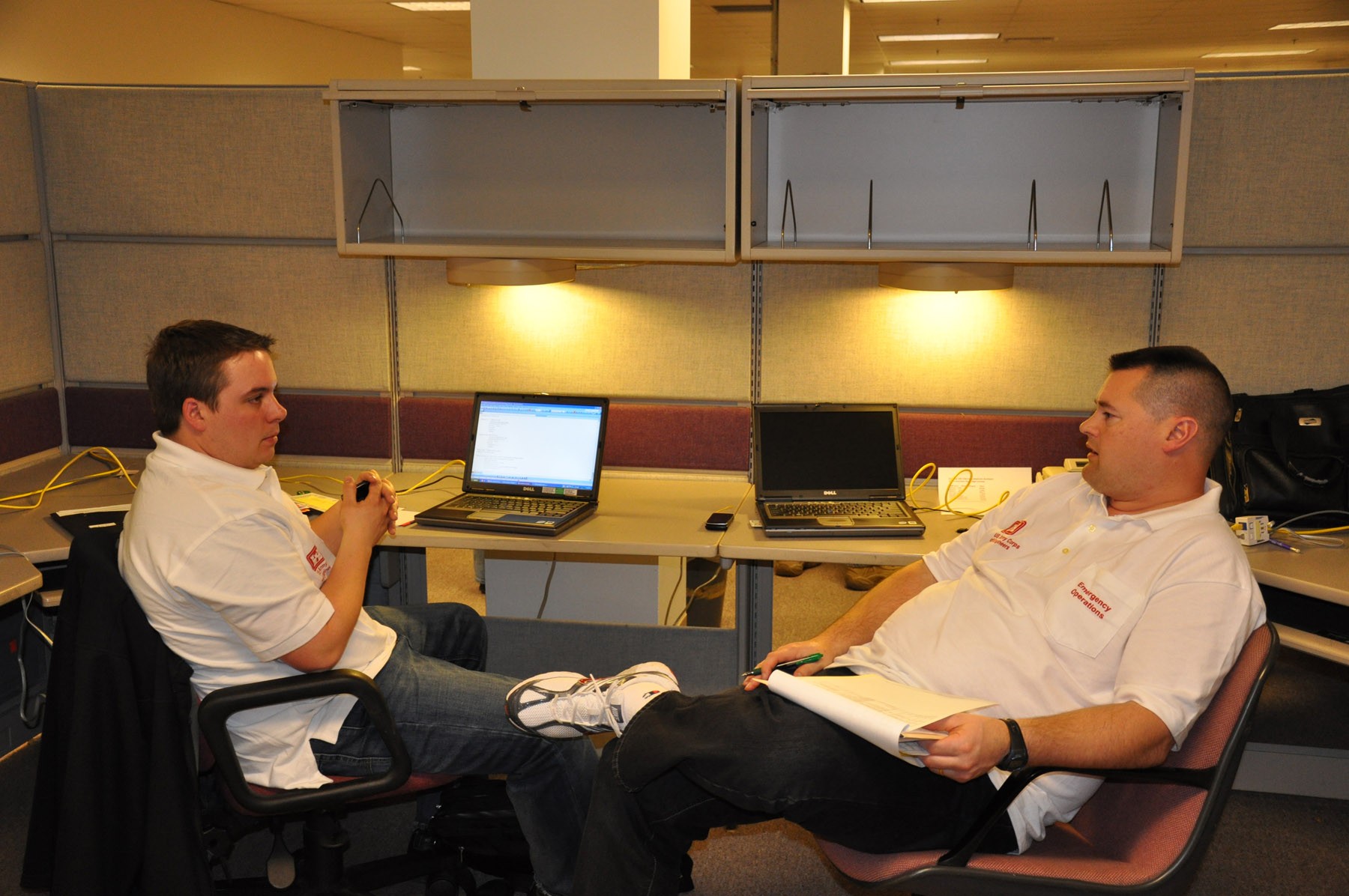
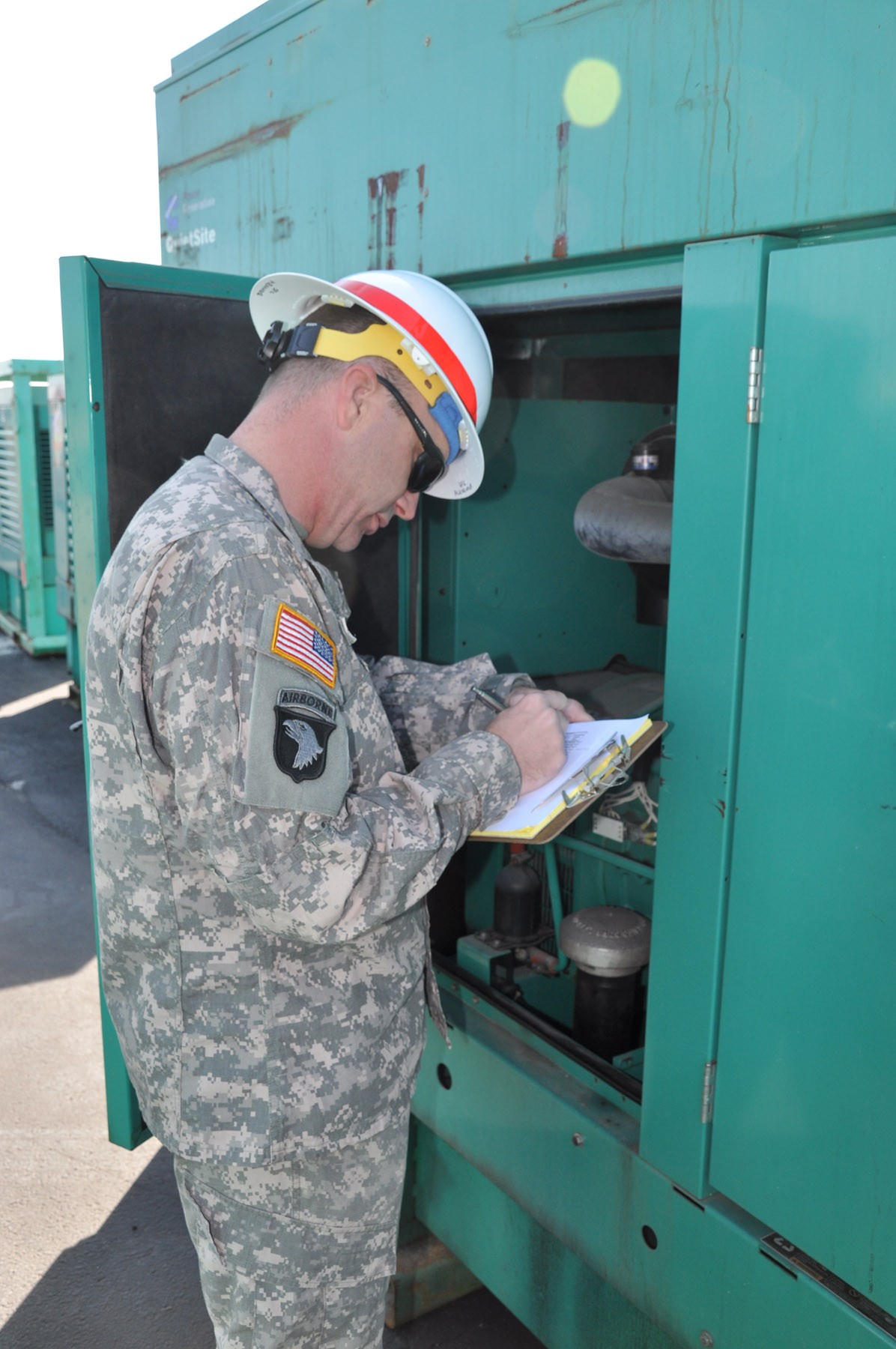
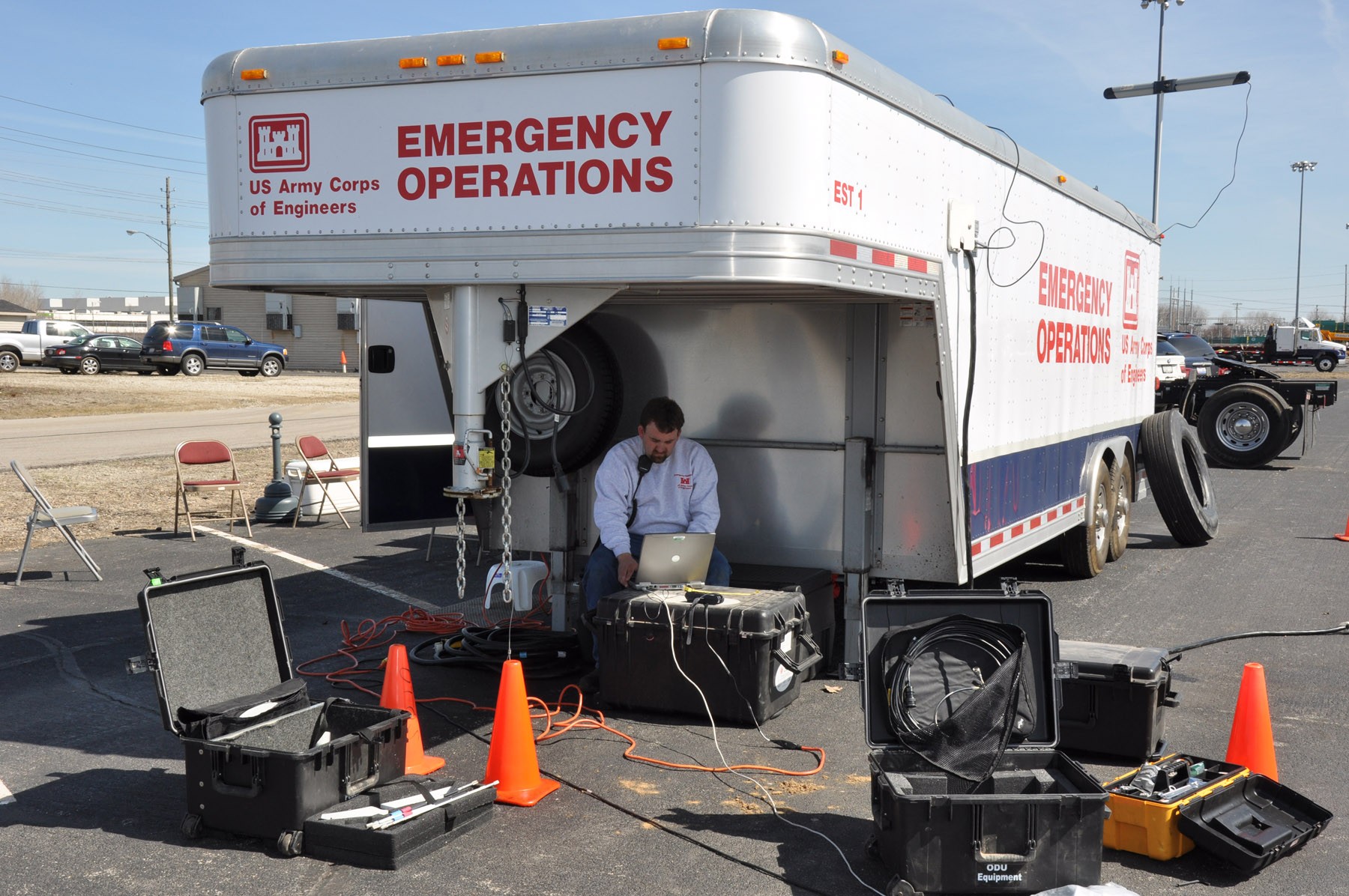
Social Sharing